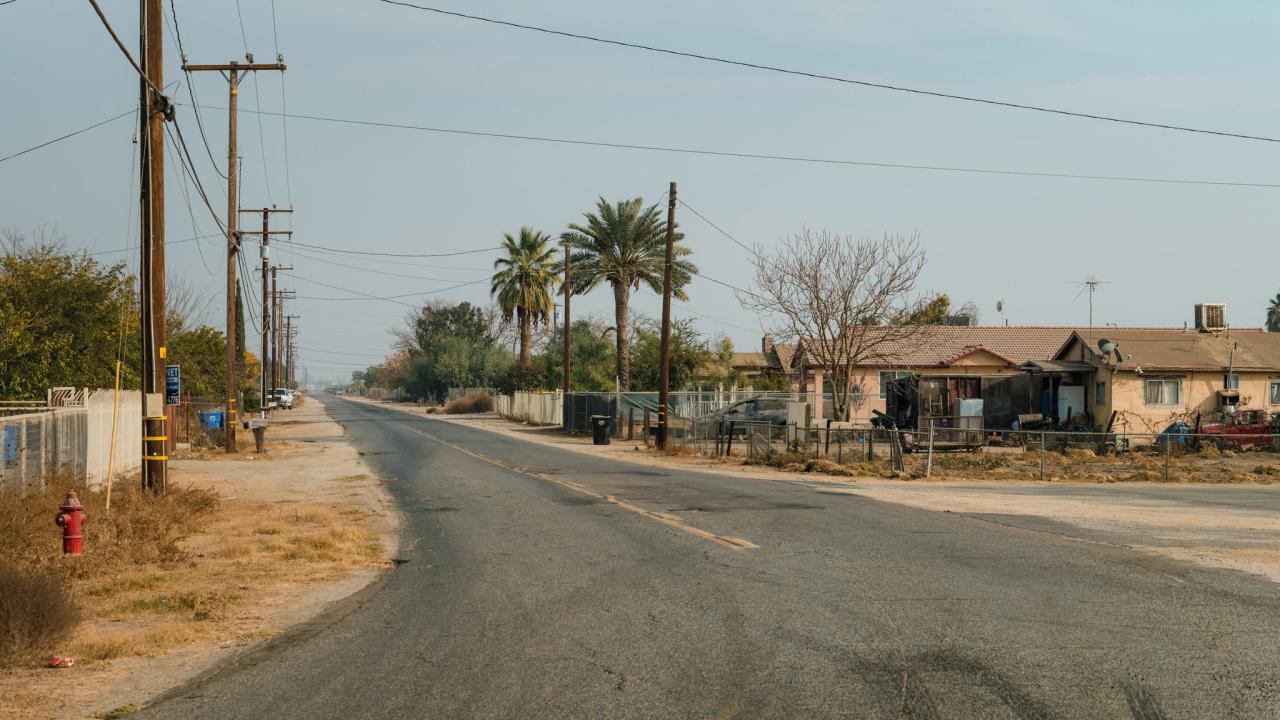
How Racism Ripples Through Rural California’s Pipes
By Jose A. Del Real for the New York Times on November 29, 2019
"TEVISTON, Calif. — Bertha Mae Beavers remembers hearing stories as a child about the promises of California, a place so rich with jobs and opportunity that money, she was told, 'grew on trees.' So in the summer of 1946 she said goodbye to her family of sharecroppers in Oklahoma and set out for a piece of it.
For decades she labored in the Central Valley’s vast cotton and grape fields, where eventually her children joined her. Looking back, Ms. Beavers, who turned 90 this year, has sometimes wondered why she left home at all. It was all the same trouble, she said.
Amid a vast migration during the early 20th century, tens of thousands of black people like Ms. Beavers came to California’s farm country from far-off states in the Cotton Belt and the Dust Bowl.
And as in other parts of the United States, black migrants were met with Jim Crow-style racism: 'Whites Only' signs, curfews and discriminatory practices by banks. Often, the only places black families could settle were on arid acres on the outskirts of cultivated farmland — places like Teviston, the all-black colony where Ms. Beavers raised 12 children in 'a two-bedroom shack' with no bathrooms or running water.
'When we came out here, there were just about two houses and the rest were in tents, just tents, and no water, we had no water for years,' Ms. Beavers said one recent evening, surrounded by several of her adult children.
Today, the legacy of segregation in the Central Valley reverberates underground, through old pipes, dry wells and soil tainted by shoddy septic systems.
Lack of access to clean drinking water remains a problem across California today and low-income communities are disproportionately affected. As many as 350,000 people lack access to potable water in the San Joaquin Valley alone, according to a 2018 report by the University of California Davis Center for Regional Change. Many people say the conditions resemble the developing world; others call it the Appalachia of the West.
Many labor settlements and rural communities that formed as nonwhite enclaves are today just miles away from more reliable water systems, and yet they remain without access.
The lingering effects of such isolation are especially clear in the handful of rural colonies that once provided refuge for thousands of black farmworkers — from Lanare in Fresno County to Matheny Tract in Tulare County to Fairmead in Madera County. These small towns are now predominantly Latino and are among the very first to lose water when drought comes. When water does flow, it is often tainted by arsenic or other chemicals.
California is not the only state facing problems with drinking water supplies. Nationwide, approximately two million Americans lack access to running water or indoor plumbing, according to a recent report by the nonprofit organizations DigDeep and the US Water Alliance.
The report found race and poverty were key variables in predicting access to clean drinking water and sanitation. 'The United States is home to some of the most reliable water and wastewater systems on earth, and many Americans believe access is universal,' the authors wrote. 'But in fact, millions of the most vulnerable people in the country — low-income people in rural areas, people of color, tribal communities, immigrants — have fallen through the cracks.'
In July, Gov. Gavin Newsom of California signed into a law a measure to provide $130 million annually for the next decade to rebuild water infrastructure in many of the poorest communities around the state. The money, say activists and water policy experts, will finally provide an opportunity to consolidate many small water systems with larger municipal systems nearby that are more resilient.
Local governments and nonprofits are waiting to see which of them will be the first to receive infrastructure money from the new fund.
